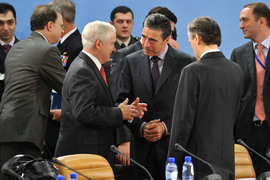The process is continuous and takes place both on an informal and a formal basis with a minimum of delay or inconvenience, due to the fact that all member states have permanent delegations at NATO Headquarters in Brussels.
The practice of regularly exchanging information and consulting together ensures that governments can come together at short notice whenever necessary, often with prior knowledge of their respective preoccupations, in order to agree on common policies or take action on the basis of consensus.
There are different forms of consultation, including the possibility of bringing an issue to the attention of the North Atlantic Council under Article 4 of the Washington Treaty. The consultation process therefore gives NATO an active role in preventive diplomacy by providing the means to help avoid military conflict; it also reinforces the Alliance’s political dimension.

